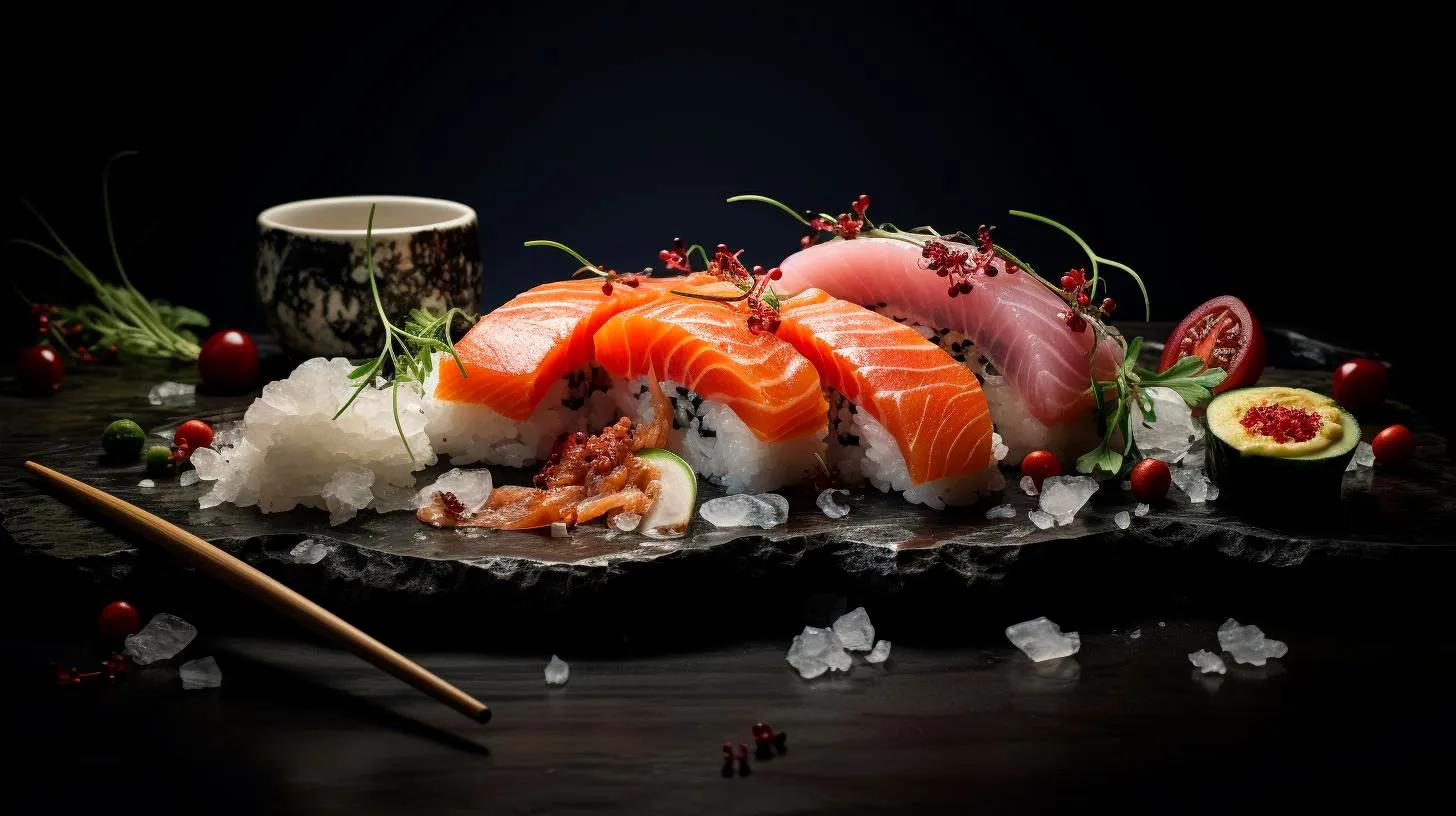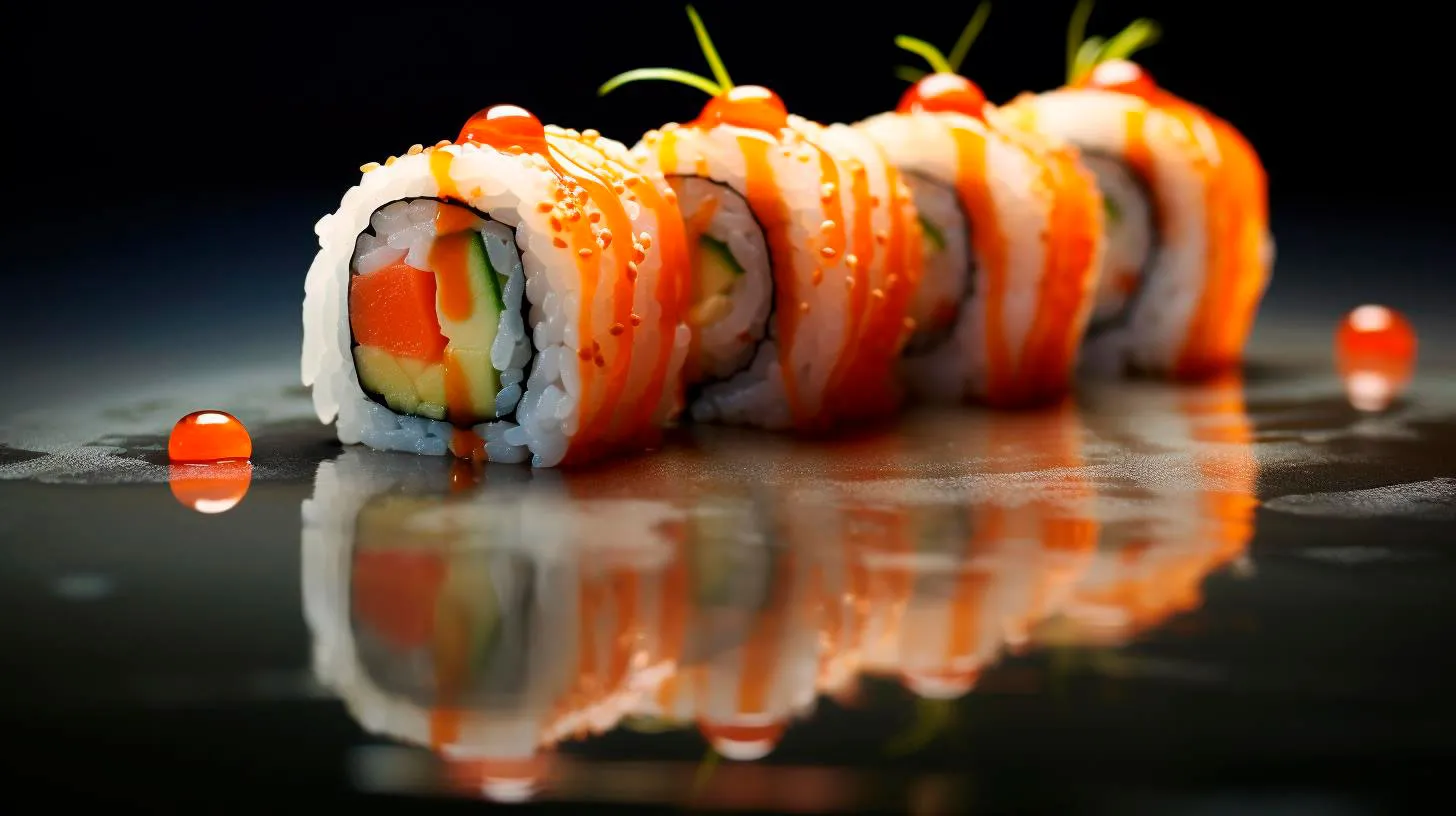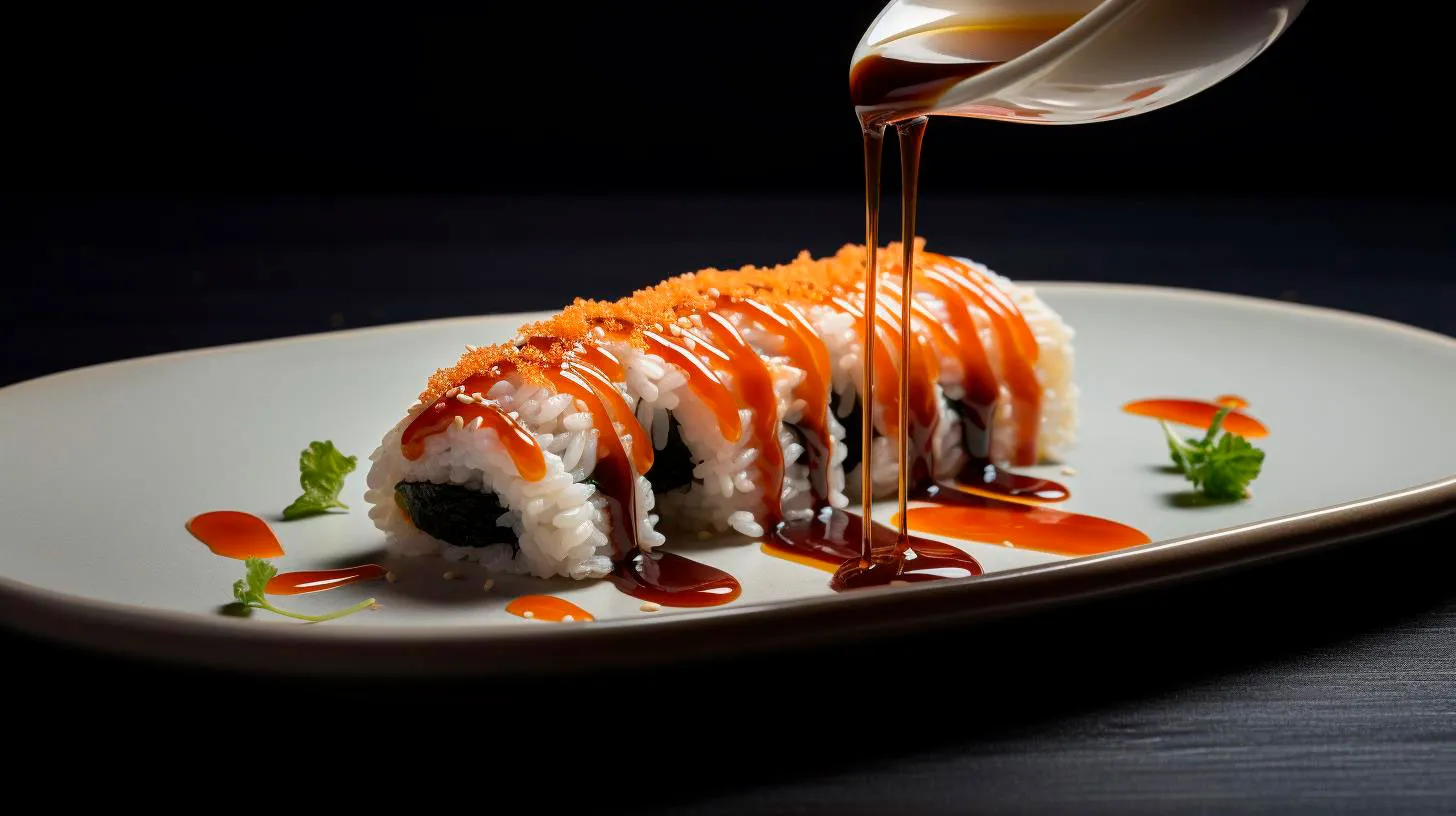Festive Flavors: Uncovering the Connection between Sushi and Traditional Japanese Celebrations
In this article, we will uncover the fascinating relationship between sushi and traditional Japanese celebrations.
The Origins of Sushi
Before delving into the connection between sushi and Japanese celebrations, it is essential to explore the origins of this beloved dish. Sushi, initially known as narezushi, dates back to the 2nd century AD in Southeast Asia. This method involved fermenting fish by wrapping it in rice and preserving it with salt. Over time, sushi evolved into a popular street food and eventually transitioned into the elegant and artistic form we now associate with Japanese cuisine.
Key Takeaway:
- Sushi originated from Southeast Asia and has transformed into a cultural icon over centuries.
Sushi’s Significance in Japanese Celebrations
Japanese celebrations are deeply intertwined with cultural traditions that showcase the country’s rich heritage. Sushi plays a significant role in these festivities, adding flavor, symbolism, and a sense of elegance.
New Year’s – The New Year, known as Oshogatsu, is the most important celebration in Japan. As families gather to welcome the upcoming year, sushi becomes an essential part of the traditional feast. Osechi Ryori, a special New Year’s meal, includes a variety of sushi rolls known as makizushi. These rolls are carefully prepared and thoughtfully arranged to symbolize good luck, prosperity, and a fresh start.
Cherry Blossom Festival – The arrival of spring is celebrated throughout Japan with the iconic Cherry Blossom Festival, known as Hanami. This picturesque event is accompanied by hanami bento, special boxed meals featuring beautifully crafted sushi. These meals allow people to enjoy the blossoming cherry trees while savoring the delicate flavors of sushi.
Children’s Day – Kodomo no Hi, also known as Children’s Day, is a festival dedicated to celebrating children’s growth and happiness. This event often features colorful carp-shaped windsocks, or koinobori, swaying in the wind. Sushi, specifically inari sushi (sushi rice wrapped in a sweet tofu pouch), is commonly served during this festival to bless the children with good fortune and a bright future.
Key Takeaways:
- Sushi is intricately tied to Japanese celebrations and adds cultural depth to the festivities.
- Each celebration has its unique sushi dish, symbolizing different aspects of tradition and values.
The Role of Sushi Chefs in Celebration Preparations
Behind every meticulously crafted sushi roll lies the skill and passion of a sushi chef. These talented individuals are considered true artists, as they master the art of sushi-making through years of training and experience. During traditional Japanese celebrations, sushi chefs play a pivotal role in preserving culinary traditions and creating unforgettable dining experiences for guests.
From selecting the freshest ingredients to presenting the sushi in an enticing and aesthetically pleasing manner, sushi chefs ensure that each bite delivers an explosion of flavors. Their knowledge of traditional ingredients and techniques enables them to uphold the authenticity of Japanese cuisine during celebrations.
Key Takeaway:
- Sushi chefs uphold culinary traditions and create exceptional dining experiences during Japanese celebrations.
- Their expertise in selecting ingredients and mastering techniques adds authenticity to sushi.
Health Benefits of Sushi
In addition to its cultural significance, sushi is renowned for its health benefits. This traditional Japanese dish offers a nutritious feast, packed with essential vitamins, minerals, and omega-3 fatty acids. The following health benefits of sushi make it a popular choice for those seeking a delicious and nutritious meal:
- Weight Management: Sushi is generally low in calories and can be an excellent option for those attempting to maintain a healthy weight.
- Heart-Healthy: Fish used in sushi, such as salmon and tuna, are rich in omega-3 fatty acids, which promote heart health and can help reduce the risk of heart disease.
- High in Protein: Sushi is a great source of lean protein, which is essential for muscle growth and repair.
- Antioxidant-Rich: The addition of vegetables like seaweed and pickled ginger in sushi provides antioxidants that help fight free radicals in the body.
Key Takeaways:
- Sushi offers various health benefits, including weight management and heart health.
- The inclusion of nutrient-rich ingredients contributes to sushi’s overall nutritional value.
In conclusion, sushi holds a special place in traditional Japanese celebrations. Its rich history, cultural significance, and exquisite flavors make it an integral part of events like New Year’s, Cherry Blossom Festival, and Children’s Day. The dedication and skills of sushi chefs ensure that each celebration is filled with culinary mastery and authenticity. Moreover, sushi’s health benefits add to its appeal, making it an ideal choice for those seeking both taste and nutrition.
So, the next time you celebrate a special occasion with sushi, take a moment to appreciate the deep-rooted connection between this beloved dish and Japanese culture.
Sushi: The Perfect Fusion of Tradition and Innovation at Japanese Festivals
In this article, we will explore the fascinating world of sushi, its origin, key ingredients, and how it has evolved into an art form at Japanese festivals.
A Glimpse into Sushi’s Origins
Sushi traces its roots back to ancient Japan, where it was initially developed as a means to preserve fish. During the 8th century, cooked rice was used to wrap fish, acting as a natural fermentation agent. This technique allowed fish to be stored for extended periods, eventually transforming into the delectable treat we now know as sushi. Over time, sushi evolved from a preservation method to a culinary masterpiece.
The Key Ingredients of Sushi
Often referred to as the heart of sushi, the key ingredient is obviously the fish. Freshness plays a vital role in ensuring the culinary experience is top-notch. While traditional sushi employs a variety of fish, some popular options include tuna, salmon, shrimp, mackerel, and yellowtail. Another key ingredient is sushi rice. Short-grained and sticky, it is seasoned with vinegar, salt, and sugar to achieve the perfect balance. Seaweed, known as nori, is used as a wrapper for certain sushi types, such as maki rolls. Additionally, condiments like soy sauce, wasabi, and pickled ginger add an extra kick to the flavor profile.
The Perfect Bite: Traditional Sushi Styles
When it comes to traditional sushi styles, there are several noteworthy options to behold:
- Nigiri: Nigiri sushi consists of a small mound of rice topped with a slice of fish or other seafood. The fish is often brushed with soy sauce or other flavorings for added taste.
- Sashimi: Though technically not sushi, sashimi is a popular Japanese delicacy. It consists of thinly sliced, raw fish served with dipping sauces.
- Maki: Perhaps the most recognizable sushi style, maki rolls involve rolling fish, vegetables, or other fillings in nori and rice. Popular options include the California roll and the spicy tuna roll.
- Temaki: Temaki sushi is hand-rolled into a cone shape and typically filled with sushi rice, fish, and vegetables. It is often enjoyed as a casual treat.
Sushi at Japanese Festivals: Tradition Meets Innovation
Japanese festivals provide a platform for sushi to shine as an art form where tradition meets innovation. These festivals showcase the skillful craftsmanship and creativity of sushi chefs who take pride in their culinary creations. Here are a few key takeaways about sushi at Japanese festivals:
- Exquisite Presentation: Sushi is not just about its taste; it is also a visual delight. At Japanese festivals, sushi is often intricately arranged, using vibrant colors and artistic presentations that elevate the dining experience.
- Fusion Flavors: While preserving the essence of traditional sushi, festival chefs also introduce innovative flavors by incorporating new ingredients and techniques. This fusion creates a delightful blend of familiar and unexpected flavors.
- Interactive Workshops: Many Japanese festivals offer sushi-making workshops, allowing visitors to experience the art of sushi firsthand. Participants gain insights into the techniques, ingredients, and cultural significance of sushi.
The Global Popularity of Sushi
Sushi’s journey from a traditional Japanese dish to a global phenomenon is remarkable. The popularity of sushi has skyrocketed in recent years, with an increasing number of people embracing this culinary delight. Here are some interesting statistics:
- In the United States alone, sushi consumption has increased by over 200% in the past decade.
- The global sushi market is estimated to reach over $22 billion by 2025.
- In 2019, Japan’s largest sushi chain, Sushiro, expanded to Taiwan, marking the first time a Japanese sushi chain went public overseas.
These figures clearly depict the growing popularity and global acceptance of this traditional Japanese delicacy.
In Conclusion
Sushi is more than just a dish; it is a cultural phenomenon that beautifully blends tradition and innovation. From its humble beginnings as a preservation method, sushi has evolved into an art form with various styles and flavors. Japanese festivals provide the perfect platform to experience the creativity, precision, and sheer delight that sushi offers. So, the next time you attend a Japanese festival, be sure to savor this fusion of tradition and innovation that is sushi.
From Street Food to Cultural Icon: Exploring the Evolution of Sushi in Japanese Festival Menus
In this blog article, we take a closer look at how sushi has transformed itself from humble beginnings to a revered culinary delight.
The Birth of Sushi: A Taste of Simplicity
Centuries ago, sushi was born out of necessity in the streets of ancient Japan as a way to preserve fish. During a time when refrigeration did not exist, Japanese street vendors developed a technique called “Nare-Zushi,” which involved fermenting fish with salt and rice. This created a tangy and sour taste, serving as a preservation method for fish. The technique became popular and laid the foundation for what we now know as sushi.
The basic ingredients of traditional sushi include vinegared rice, raw or cooked fish, and a variety of vegetables. This simple yet unique combination allowed sushi to capture the attention of festival-goers and gradually gain recognition as a delicious treat.
Modernization and the Rise of Fusion Sushi
As sushi gained popularity, it underwent several transformations to cater to diverse palates. One significant milestone was the introduction of “Nigiri-Zushi” in the 19th century. This style involved placing a slice of raw fish on top of a small ball of seasoned rice, revolutionizing sushi presentation.
Over time, sushi adapted to changing tastes and embraced fusion cuisine. The fusion sushi trend began in the 1960s with the invention of the California Roll in Los Angeles. This creative twist saw traditional ingredients, such as raw fish, combined with avocado and rolled in seaweed on the outside. The California Roll became an instant hit, propelling sushi further into the global scene.
Sushi: A Staple in Japanese Festival Menus
- Traditional Festivals: In Japan, festivals are an integral part of culture and tradition. Sushi has become a staple food item during these celebrations, offering festival-goers a taste of culinary excellence.
- Regional Variations: Every region in Japan has its own unique sushi specialty, showcasing local flavors and ingredients. From the delicate “Edomae-Zushi” in Tokyo to the luxurious “Gomoku-Zushi” in Kyoto, sushi plays a key role in representing regional diversity.
- Seasonal Ingredients: Japanese festivals are closely tied to the seasons, and sushi menus change accordingly. Festivals provide an opportunity to indulge in seasonal ingredients, such as cherry blossoms, firefly squid, and bamboo shoots, which are incorporated into innovative sushi creations.
The Sushi Revolution: Health Trends and Sustainability
Sushi has not only evolved in taste and presentation but has also adapted to meet the demands of health-conscious consumers. With increasing global awareness around nutrition and sustainability, the modern sushi industry has embraced several changes.
Restaurants and festival vendors now offer a wide range of sushi options to cater to various dietary preferences. Vegetarian sushi, known as “Oshizushi,” is made of pressed vinegar rice and a variety of vegetables, making it a popular choice among those seeking plant-based alternatives.
Additionally, sushi establishments are increasingly embracing sustainable fishing practices and supporting local suppliers. This shift aims to ensure the long-term availability of seafood and reduce the industry’s ecological impact.
Key Takeaways
- 1. Sushi originated as a street food staple and has transformed into a cultural icon in Japan.
- 2. Nigiri-Zushi revolutionized sushi presentation, paving the way for modern sushi variations.
- 3. Fusion sushi, exemplified by the California Roll, introduced new flavors and attracted international attention.
- 4. Sushi has become a highlight of Japanese festivals, showcasing regional specialties and seasonal ingredients.
- 5. The sushi industry has embraced health trends, offering vegetarian options and promoting sustainability.
In conclusion, sushi has a fascinating journey from its origins as a simple street food to becoming a global culinary sensation. Japanese festivals play a significant role in showcasing the diversity and evolution of sushi, making it a cherished item on festival menus. As we continue to appreciate its taste and cultural significance, sushi continues to reinvent itself while staying true to its traditional roots.
Street Stall Sushi Delights: How Sushi Became a Popular Choice at Japanese Festivals
The Rise of Sushi as a Street Food
Sushi initially gained fame as a formal dish served in exclusive restaurants and sushi bars. However, with the increasing demand and love for this cuisine, it soon found its way to street stalls at Japanese festivals. This evolution was driven by various factors:
- Innovation: Festival vendors found creative ways to simplify the preparation and presentation of sushi, making it more accessible to a wider audience. They started offering sushi rolls known as maki-zushi that could be quickly and easily eaten on the go.
- Convenience: As festivals tend to be crowded, it became essential to offer handheld snacks that are convenient to eat while strolling and enjoying the festivities. Sushi proved to be an ideal choice as it can be neatly wrapped in seaweed or served on skewers, allowing people to indulge without needing plates or utensils.
- Variety: While traditional sushi mainly consisted of raw fish, festival vendors started experimenting with different fillings such as tempura, crab sticks, and various vegetables. This diversification attracted a broader customer base, catering to different tastes and preferences.
- Affordability: Street stall sushi is often more budget-friendly compared to fine dining options. This made it an attractive choice for festival-goers who wanted to enjoy a taste of Japan’s culinary heritage without breaking the bank.
The Advantages of Street Stall Sushi
Street stall sushi offers a unique dining experience that sets it apart from its more formal counterparts. Here are some advantages of indulging in this festival favorite:
- Authentic Flavors: While street stall sushi may have a simpler presentation, it still delivers the same authentic flavors found in traditional sushi. The combination of vinegared rice, fresh ingredients, and flavorful sauces creates a mouthwatering experience.
- Social Atmosphere: Japanese festivals are known for their lively and communal atmosphere. Enjoying sushi from a street stall creates an opportunity for people to gather around and share their love for this beloved dish.
- Freshness: Festival vendors take great pride in using the freshest ingredients available. This ensures that the sushi you enjoy at these street stalls is of the highest quality.
- Cultural Immersion: Trying street stall sushi allows visitors to immerse themselves in Japanese culture and culinary traditions. It provides a glimpse into the local cuisine and the techniques used to create these delectable treats.
Key Takeaways
Sushi’s journey from upscale restaurants to street stalls at Japanese festivals highlights its adaptability and enduring appeal. Key takeaways from the rise of street stall sushi include:
- Street stall sushi is a popular and convenient snack at Japanese festivals, offering festival-goers a taste of traditional Japanese cuisine.
- Innovation in presentation and simplification of preparation made sushi suitable for the fast-paced festival atmosphere.
- Street stall sushi offers variety, affordability, and authentic flavors, making it an attractive choice for festival attendees.
- Indulging in street stall sushi provides a social and immersive dining experience, allowing visitors to connect with Japanese culture.
So, the next time you find yourself at a lively Japanese festival, be sure to seek out the colorful street stalls offering delectable sushi. Dive into the flavors and immerse yourself in the vibrant atmosphere as you savor this beloved culinary delight.



